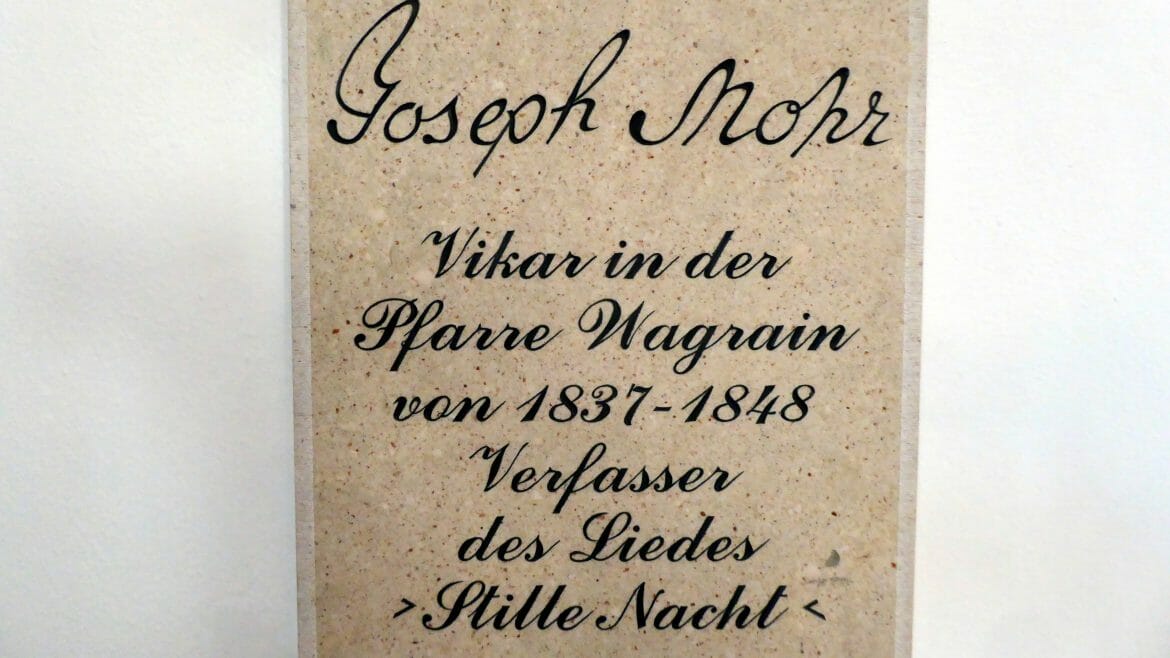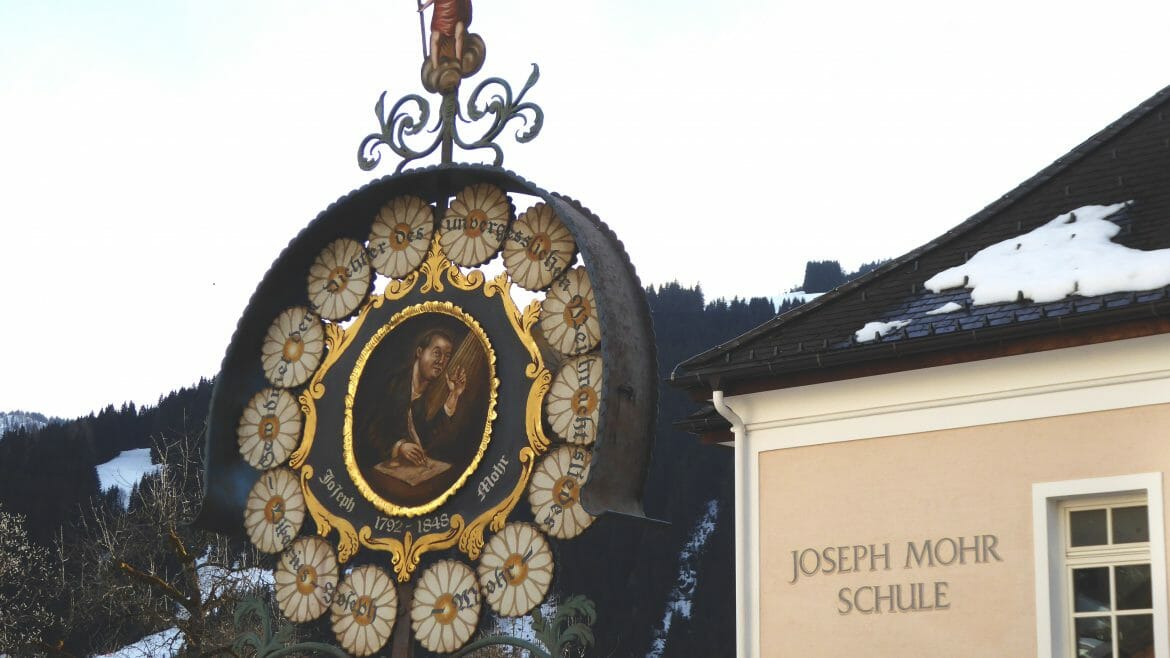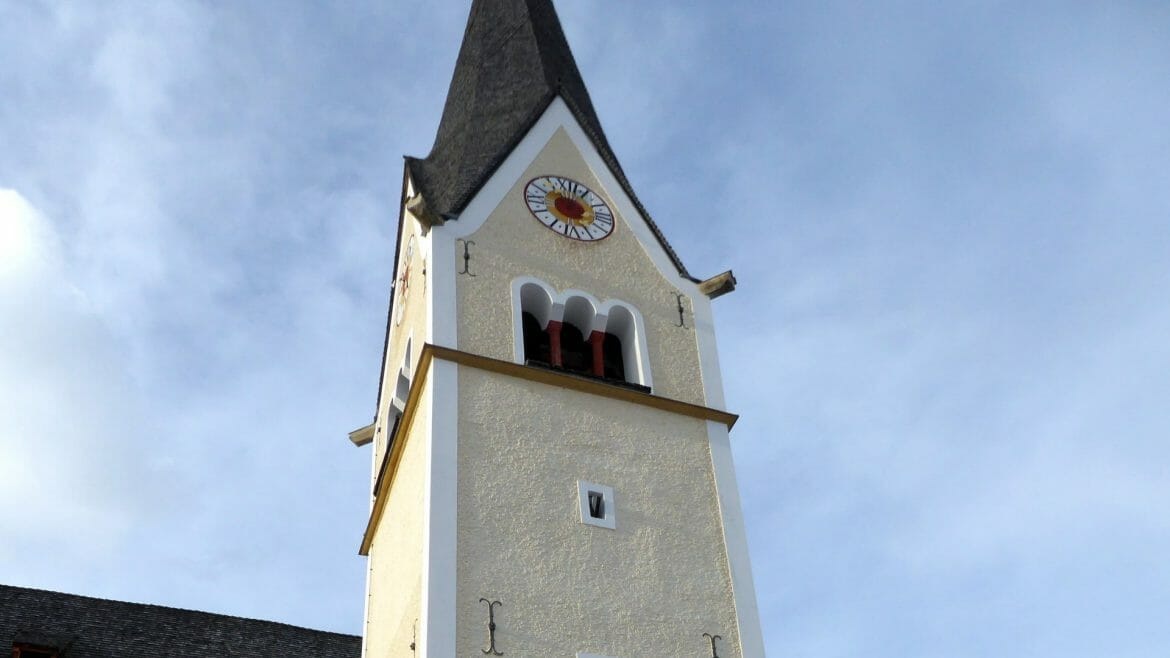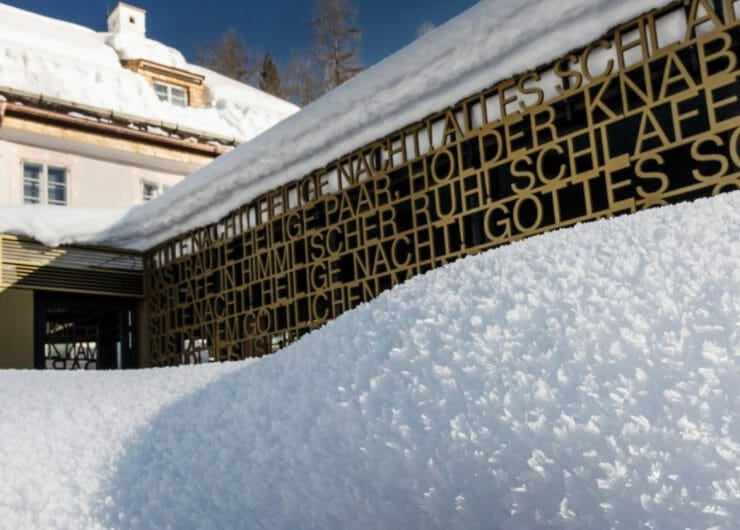
Today, Wagrain is a popular holiday and winter sports destination and is part of the Salzburger Sportwelt. Joseph Mohr likely wouldn’t be able to recognise his final residence any longer: State-of-the-art lift systems and hotels, a variety of winter events and perfectly marked hiking trails for the summer — among them the popular Salzburger Almenweg trail — make up Wagrain-Kleinarl today.
Priest and “social vicar”
In Wagrain, Joseph Mohr is remembered as a “social vicar”. He cared deeply for the smallest, the poorest and those of the lowest social status. During his second year in Wagrain, he was already the main initiator for the construction of a public school, for which he gave up almost all of his belongings. The derelict wooden sacristan house, which simultaneously acted as a school building, only had one room for around 170 to 180 children. Taking advantage of his influence, Joseph advocated for the speedy construction of a new building. On 5 November 1838, the new school was personally inaugurated by Prince-Bishop Friedrich von Schwarzenberg following only five months of construction. Joseph Mohr also launched an initiative to enable the poorest children to be able to go to school.
In the end, he died as poor as he was when he was born
Joseph Mohr purchased a firefighting water hose for the municipality and also committed himself to caring for the poor and the old. Especially the harshness of the “Einlegerwesen” social system at the time was a thorn in his side: It forced the poor to move from farm to farm to be taken care of for a predetermined time. His commitment left behind especially strong traces in Wagrain. But Joseph Mohr was also popular here as a sociable and musical priest. During his time in Wagrain, he pushed his frugality so far that he ended up owning nothing but a single black robe. On 4 December 1848, Joseph Mohr died from a cold resulting from a pastoral visit to a dying person during winter, aged only 56. The “Priest of the Poor” never saw his poem become the world-famous Christmas song that it is today. His final resting place was left open until the end of the 19th century and then closed again. As there is no picture left of Joseph Mohr, the artist and priest Josef Mühlbacher had the bizarre idea in 1912 to exhume his body in order to create a template for a bronze bust based on measurements of Mohr’s skull. The piece is now on display in Oberndorf in front of the Silent Night chapel. To the horror of the residents of Wagrain, the skull was walled into the chapel in Oberndorf shortly after.
On the traces of “Silent Night” in Wagrain
- In Wagrain, the Joseph Mohr Memorial Organ in the parish church is dedicated to the work of the social vicar. In the side aisle of the church, a memorial plaque recalls Joseph Mohr as the creator of the song.
- The Wagrain Cultural Walk invites visitors to an approximately hour-and-a-half-long hike following the traces of Mohr through the Silent Night district. Following the path, you will encounter the parish church at which Mohr worked as well as the cemetery containing his final resting place.
- Near the Waggerl-Haus, you will find an additional architectural Baroque jewel: The newly renovated Pflegerschlössl in Wagrain — a former prince-bishop’s courthouse from the late 18th century. Since December 2017 it harbours the new Silent Night Museum. The exhibition areas are dedicated to the life and work of Joseph Mohr in Wagrain, the creation of the song, its international dissemination and its particular magic. With much skill and craft, a state-of-the-art museum concept was realised within the old walls, and all age groups will have something to explore. Additionally, the museum invites its visitors to actively engage with the values of tranquillity and peace in an increasingly hectic time.
- The yearly “Silent Night Advent Wagrain” combines the song’s peaceful message with Christmas traditions from all over the world. During the “Advent of Cultures”, various guest countries introduce themselves as part of a group exhibition. Additionally, a number of Advent concerts are set to take place. At the Christkindl post office at the Wagger House, visitors can decorate their own Christmas letters. On 24 December, visitors can also start feeling festive with the romantic tower music.
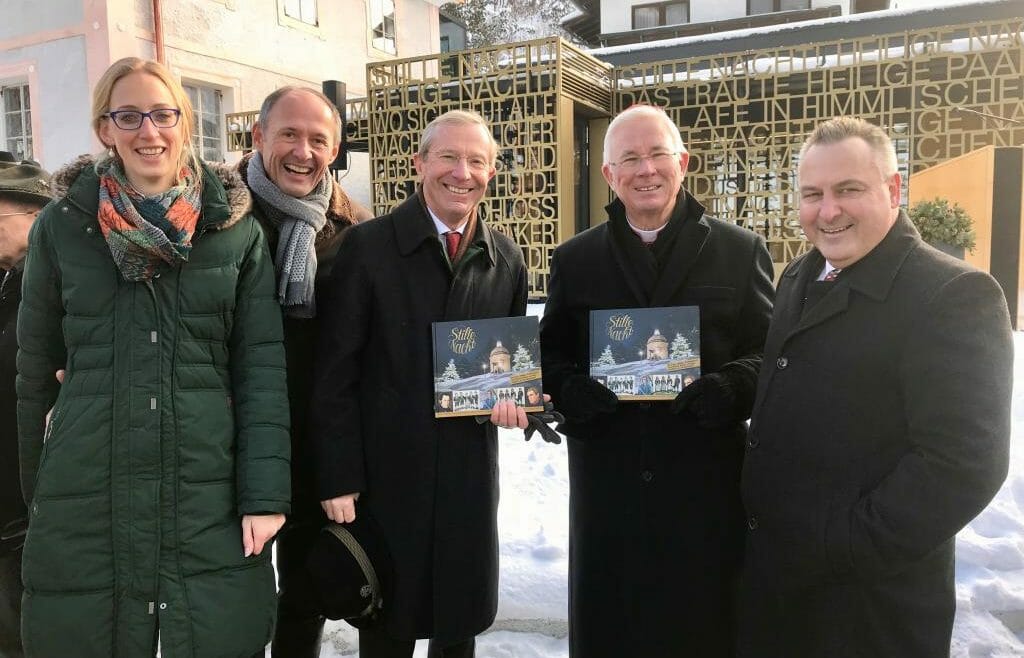
(c) Edition Tirol, Opening of the Silent-Night-Museum at the “Pflegerschlössl” in Wagrain: f.l.t.r.: Carola Marie Schmidt (Manager of the museum), Leo Bauernberger (CEO Salzburg State Board of Tourism), Governor Wilfried Haslauer, Archbishop Franz Lackner, Martin Reiter (Silent-Night-Researcher from Zillertal/Tirol, author and book publisher)


